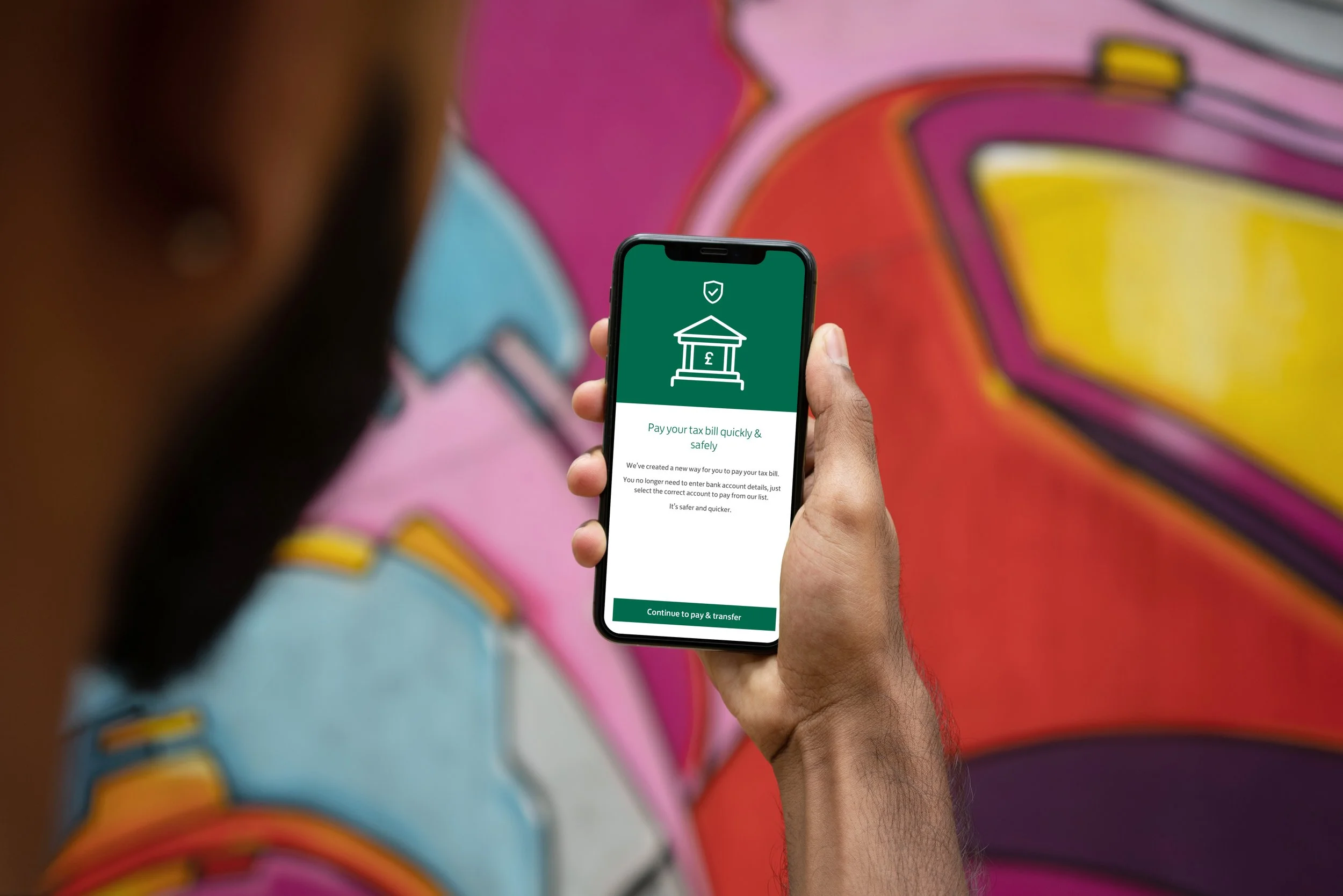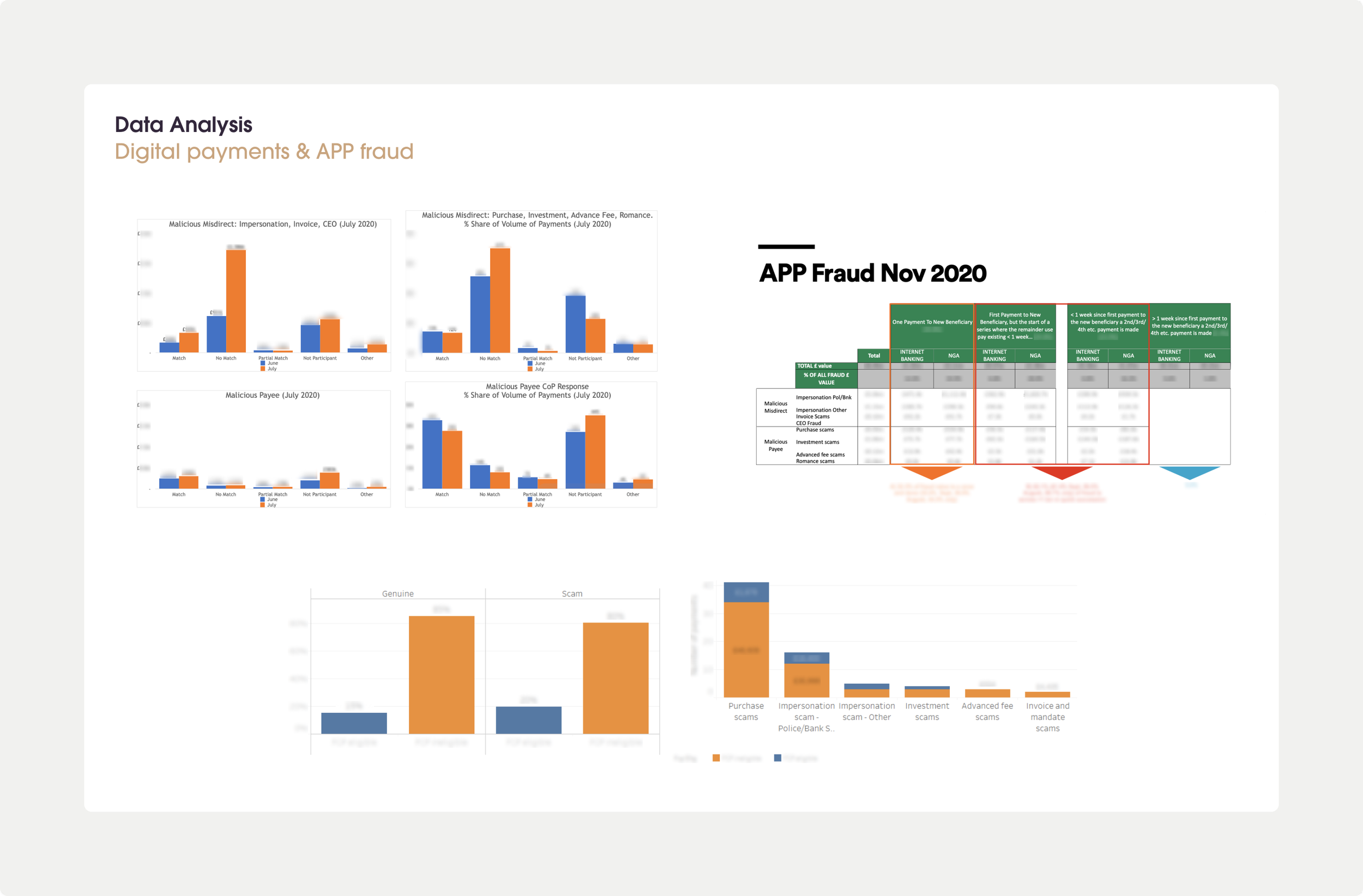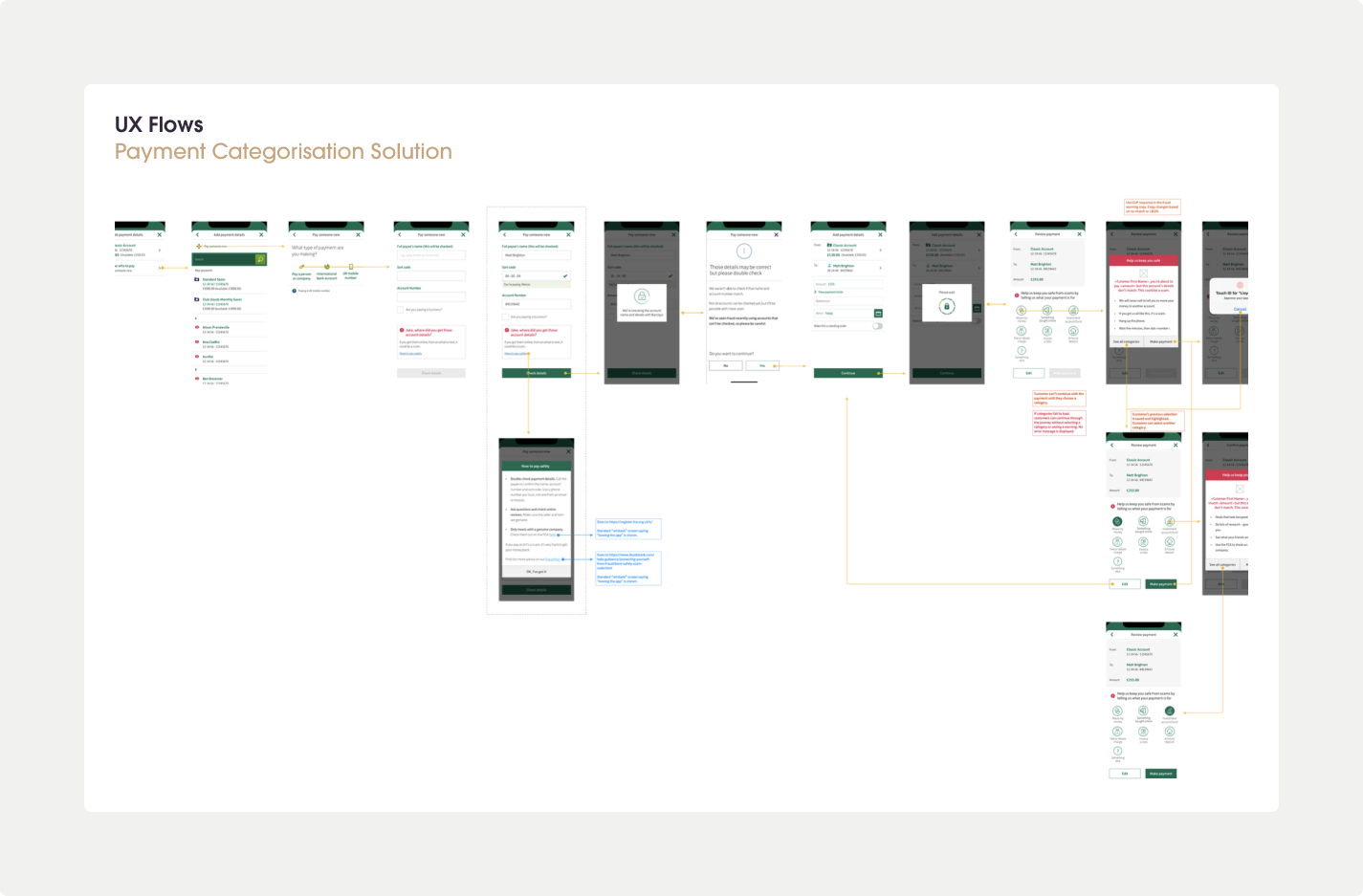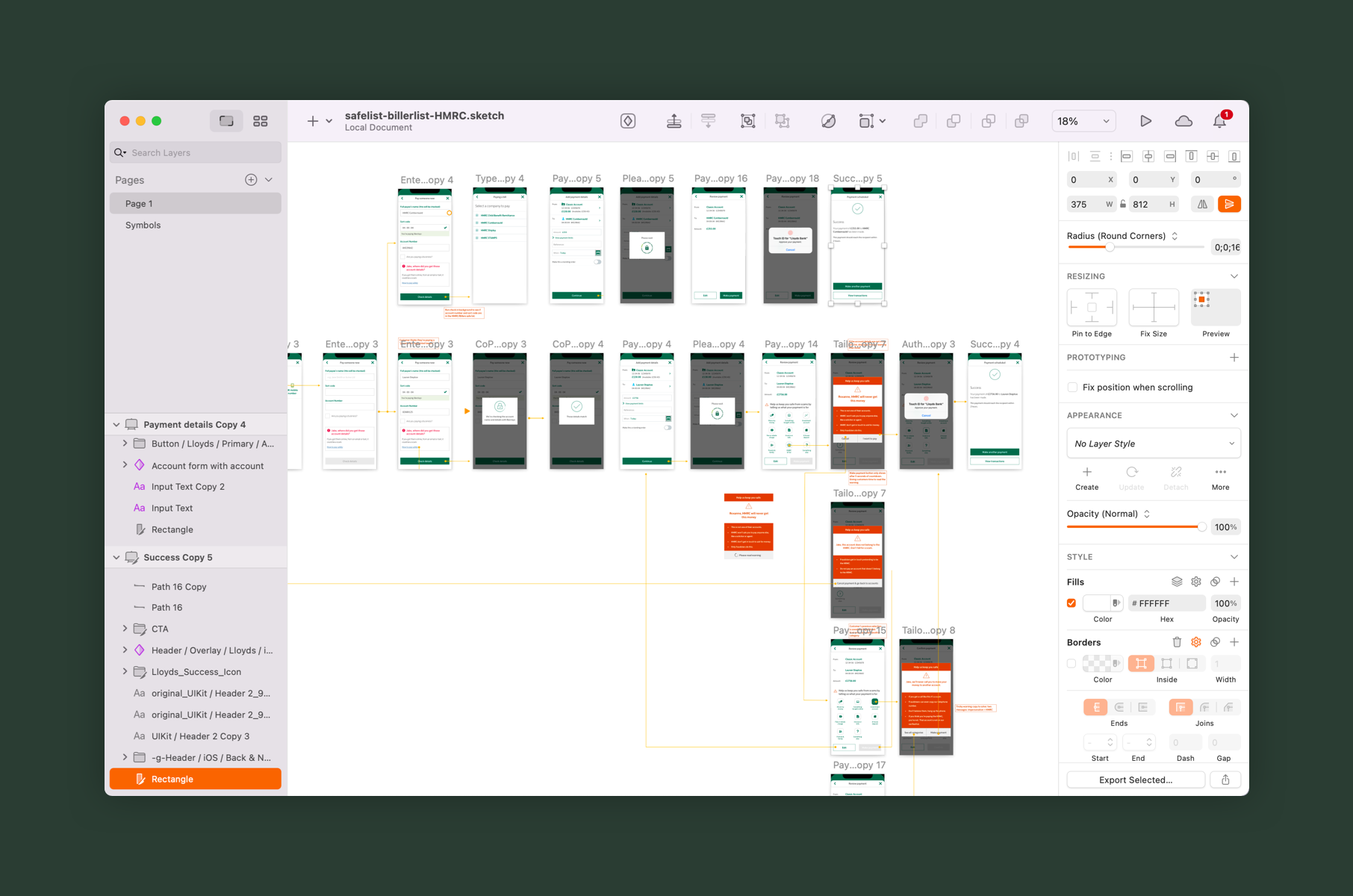Lloyds Banking Group
Digital payments user experience
Challenge
Reduce Authorised Push Payment (APP) fraud while maintaining a seamless and enjoyable digital payments experience.
APP fraud occurs when individuals are deceived into making a payment they believe is legitimate, but it is actually being sent to a scammer’s account. Our goal was to minimise these incidents without burdening customers with frequent, unnecessary warnings.
My Impact
I led a team of UX designers, content designers, and data analysts in ideating, prototyping, testing, and developing data-driven solutions to reduce APP fraud. By the time I left Lloyds, our efforts had reduced APP fraud by 10%, a significant achievement in safeguarding customer transactions.
Role UX/UI design & user-research | Year 2020
Lloyd's Bank Mobile App
Process
Research
Turning Data into Designs
I started by working closely with data analysts to explore patterns in APP fraud and digital payments data. The aim was to identify key indicators that suggested a customer might be falling victim to a scam, allowing us to trigger a tailored fraud warning while keeping the experience seamless for legitimate transactions. I was conscious of the need to avoid excessive fraud warnings, which could cause frustration or warning fatigue for customers making routine payments.
Key Findings from the Data:
Most APP fraud occurs on payments over £250.
Fraud is most common when the customer is paying someone they’ve never paid before.
Frequently, fraudulent payments fail the Confirmation of Payee check (account name, sort code, and number don’t match).
By focusing fraud warnings on transactions meeting these criteria, we could intervene in as few as 1-3% of digital payments, while potentially preventing over 70% of APP fraud.
Competitor Analysis
Learning from the Market
Alongside the data research, I conducted a comprehensive competitor analysis, looking at how other established banks and digital challengers were tackling fraud prevention.
What I discovered:
Most competitors displayed fraud warnings on every payment, which contributes to warning fatigue.
Some banks asked customers why they were making a payment, tailoring the fraud warning based on the type of scam (e.g., online purchase, investment).
As the lead designer, I proposed a different approach. Blanket warnings degrade the user experience for the vast majority of routine payments, and overly frequent warnings are often ignored. Our solution needed to be smarter — targeted warnings only when truly necessary.
Ideation & Prototyping
Designing a Targeted Solution
I led the design of several targeted solutions aimed at specific scam types, such as impersonation, investment, or purchase scams, creating wireframes and user flows for the digital payments journey across both mobile and web. These concepts were prioritised alongside senior stakeholders and product owners based on development costs and potential impact. The goal was always to strike the right balance between fraud prevention and maintaining a smooth customer experience. By digging deep into the data, we found metrics that would allow us to intervene in less than 3% of payments but catch over 70% of potential scams.
User Testing
Validating with Customers
The designs were tested for usability through a series of remote user interviews, which I planned, organised, and facilitated. I then analysed the findings and presented the results to senior leadership, making iterative improvements based on customer feedback. Below is an example of the user testing findings deck I compiled for one of the user testing rounds.
User Testing Report Deck
Implementation & Live Monitoring
Continuous Improvement
For final implementation, I worked closely with engineering and quality assurance to ensure a smooth handover. The rollout was progressive across Lloyds Bank, Halifax, and Bank of Scotland brands.
Alongside the digital payments product owner and a data analyst, I closely monitored the data to track the impact on both customer experience (measured by NPS) and fraud reduction. Successful designs were then rolled out to all customers across these brands.
UX/UI designs in Sketch for handover to the engineering team














